Kawaii, the now-universally recognised word to describe anything along the realms of cute, adorable, loveable, sweet, charming, darling…you get the gist. Combine the attractive factor of ‘kawaii’ with fashion, and you’ve got yourself a whole new style genre that’s as unique as it is head-turning. Most people would associate kawaii fashion with Japan because that’s where it all began many moons ago as a niche fashion stream that provided an outlet for the suppressed fashion-conscious to show off their individual taste and style.
These days, if you travel to Japan, kawaii fashion is almost everywhere you look. In fact, its popularity has transcended borders, and it’s not longer constrained to Japanese nationals only – anyone and everyone who is interested can walk along the streets of Harajuku (for example) and purchase multiple kawaii fashion style pieces to make their own. Harajuku has transformed over the years to be amazingly accommodating to the Kawaii fashion scene, with crazy cute cafes and dessert stores popping up left, right and centre – the perfect accompaniment to a day dedicated to Kawaii fashion shopping, we reckon!
We’ve detailed some interesting facts about the cute culture below that you’ll definitely have some fun reading.
The History Of The Kawaii Culture
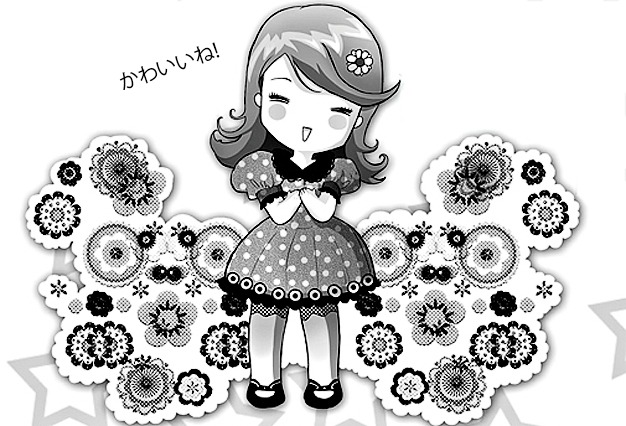
Kawaii fashion was first known to have originated back in the 1970s, when, funnily enough, a youth movement decided that they wanted to rebel against the strict and rigid nature of Japan’s culture by developing a completely new method of handwriting. Going against the grain, these teenage girls began doodling in curvy and round writing, accentuated by hearts, stars, moons, and cute faces.
This slowly but surely seeped into their style of fashion, which began to prominently display more and more frills, colourful prints, and feminine cuts. Their behaviour soon reflected their fashion choices, adopting the “burriko” style, which is when a woman adopts the mannerisms and behaviour of a child (portraying innocence) – this was immediately accepted and revered by the wider public.
Before long, shops and cafes began to respond by targeting such crowds with their products and offerings, and thus began this decades long movement of kawaii fashion that’s now part and parcel with the Japanese culture.
The Kawaii fashion movement has become synonymous with Japan’s modern pop culture – whilst it’s definitely become a global phenomenon, its roots are still strongly Japanese, through and through.
By the way, if you are really into Kawaii stuff, you can subscribe to the Kawaii Box and receive every month a lot of Kawaii products directly at your home. More info here.
Kawaii Fashion – Harajuku, Where Everything Started
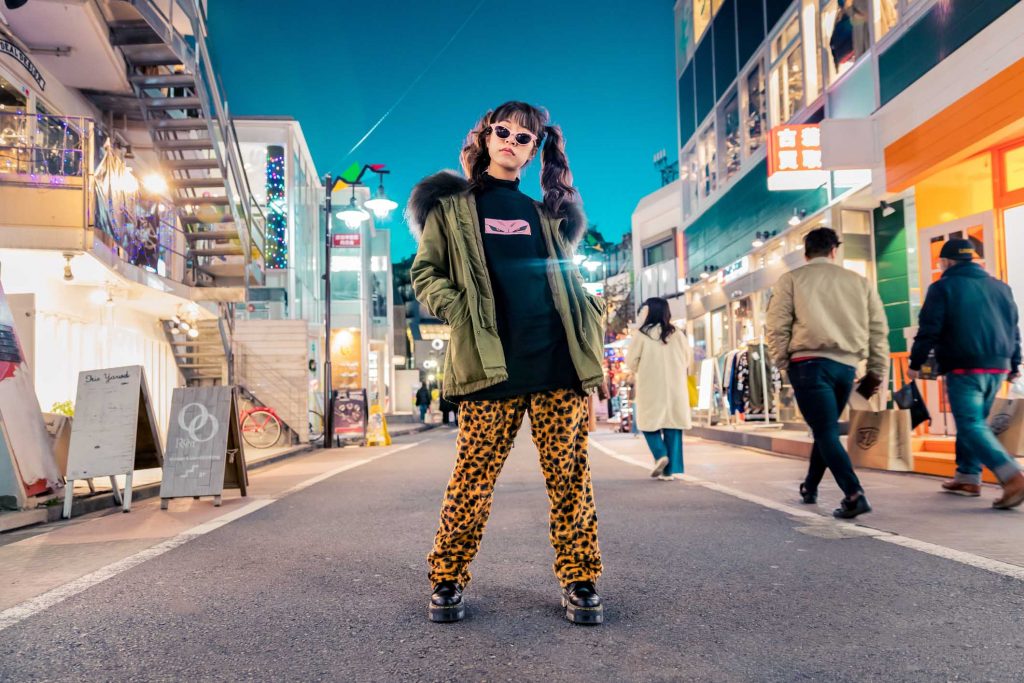
Harajuku is the undisputed kawaii fashion capital of the world. From those who grew up dressed in kawaii clothing from the day they could walk, to those who have just newly discovered the exciting style of fashion in recent years, they all congregate at this one area to shop and admire kawaii culture at its finest. From clothing, accessories, food, music, merchandise, and everything consumable in between, you will find it at Harajuku.
Whilst it’s unclear why the area itself developed into what it is today, it was an area in the past where, post-war, foreigners grouped together and settled down, creating a catalyst for a mysterious but growing sub-culture to develop. Overtime, more and more retailers opted to cater to these different tastes and crowds, and eventually it became the internationally-known fashion hub that it is today.
The Different Kawaii Fashion Styles
Kawaii fashion these days goes beyond just the adorable and cute outfits. Multiple sub-cultures have developed off the beaten path, and below we’ll look at just some of the more popular styles:
Lolita
Lolita style (in the context of kawaii fashion, not as what Western standards define it as) is essentially the art of dressing up in outfits inspired by Victorian-era style. This can typically consist of rather whimsical pieces of lace and/or satin clothing, including puffy cupcake knee-length skirts, knee-high stockings with adorned with embellishments, corsets, and headdresses.
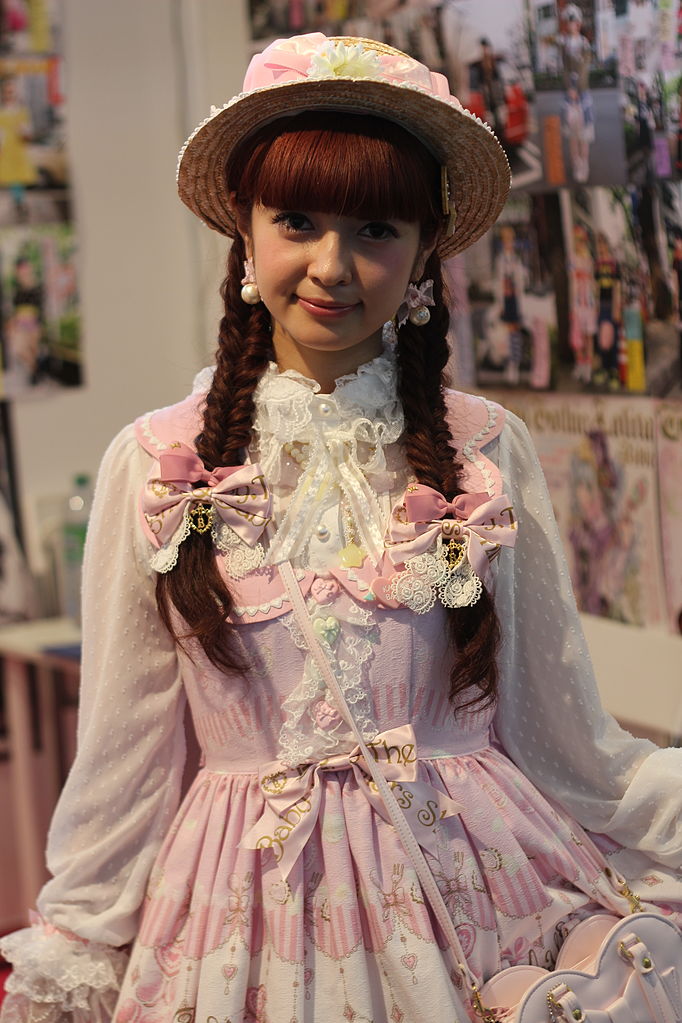
Punk
This grungy punk-rock kawaii fashion style is especially popular with the younger teenage group. Black, unsurprisingly, is the base colour of majority of their outfits, although many punk outfit choices have been known to deviate from the bland colour-palette and still maintain the essence of punk kawaii fashion. To nail the look, it’s all about the play on accessories – sterling silver piercings, chains draped across clothing, multiple zippers, etc. Also, people who rock this look generally rock the leather and plaid.

Cosplay
Cosplay (‘costume play’) is definitely one of the more prominent streams of kawaii fashion. The art of dressing up in the costume of a well-known, idolised character from a movie, game, manga, or anime has taken the world by storm, with people attending gaming conventions all over the world dressed up in cosplay. Whilst it may have been popularised in Japan due to the sheer number of famous animated characters in the pop culture climate there, people all over Europe, Asia, and the Americas now also love and participate in cosplaying.
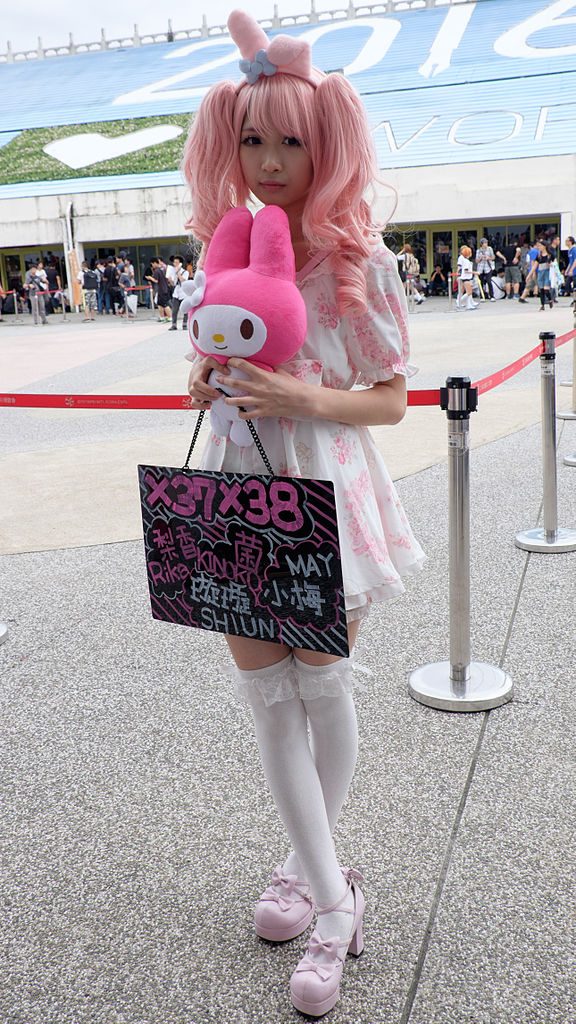
Gyaru
The Japanese coined this term after the English word ‘gal’, and it defines the style of Kawaii fashion that exudes the feminine nature of younger girls. Often entailing bleached hair, make up accentuating large eyes and outfits that are reminiscent of the typical American teenager, most of those who dress in the gyaru style aim to exude the innocent look of a child.

The Popular Kawaii Fashion Brands
For those who are new to the Kawaii fashion scene, there are definitely some major brands that embody the essence of Harajuku for you to get started:
Q-Pot
This store is one of the most popular in Tokyo to get your fix of kawaii fashion and accessories. Their standout products include adorable recreations of things such as donuts, macarons, and ice creams into accessories like badges, pencil cases, plush toys, t-shirts, hair pins, and more.
Address: 3-4-8 Jingumae Shibuya-ku Tokyo 150-0001

Swankiss
A light, feminine brand aimed towards teenage girls and those in their early twenties, stylised by minimal frills, pastel colours and girlish ruffles.
Address: Japan, 〒150-0043 Tokyo, Shibuya City, Dogenzaka, 2 Chome−29−1 Shibuya

Milk
The fashion concept of this store is a crossroad between sweet Lolita style and vintage/retro fashion. Their niche offerings means you’ll find some rather unique pieces.
Address: 6-chōme-6-29-3 Jingūmae, Shibuya-ku, Tōkyō-to 150-0001, Japan

One Spo
The vibe here is a bit more daring, with less frills and more reveals. Their brand offers to sell fashion that’s a “balance between sporty and sexy” which may appeal to those who adore Kawaii fashion but are not typically into lace or frills.
Address: 2-chōme-29-1 Dōgenzaka, Shibuya-ku, Tōkyō-to 150-0043, Japan

Baby, the Stars Shine Bright
This list would not be complete without this household name. Servicing the Lolita-crowd for over three decades, this is an absolute must visit for all sweet, feminine Lolita fashion and accessories. From satin bow shoes to frill umbrellas, they’ve got everything to complete your outfit.
Address: Japan, 〒150-0001 Tōkyō-to, Shibuya-ku, Jingūmae, 6-chōme−29−3 原宿KYビル2階

The Most Popular Kawaii Products
Whilst over the years there have been many streams of Kawaii fashion that have developed and now everyone can really make Kawaii fashion their own statement, there are a few staple items that you can purchase to nail the beginning of a long and fun fashion addiction:
Accessories
Hair is a big consideration when it comes to Kawaii fashion. Whether it’s bleached or adorned with accessories, there has to be something going on. If dyeing your hair pastel pink isn’t quite your cup of tea, just head into any of the accessories stores in Harajuku and purchase some adorable hair pins to stylise your hair. Better yet, add onto the list some wild print hair ties, floppy hats, and/or headbands. If you’re after the feminine look, you can try and accessorise with frill socks worn with strappy closed-toe heels, which is a look that many Kawaii fashionistas rock. If you want to start small, try and accessorise your backpacks with adorable badges and pins that are sold in hoards in Harajuku stores.
Clothing
You can check out the websites for the stores listed above to get inspiration, however, some basic pieces for clothing include knee-length lace and frill dresses, Victorian-style pieces, adorable prints such as food and animals, tulle skirts, bright and pastel coloured pieces, tees with motifs, plaid pants and skirts, and fishnet stockings.
Shoes
Many people opt for the close-toe heels with a strap coupled with frill or lace socks, however, for the grunge look, leather boots, Doc Martens for example, truly complete the look. Kawaii fashion also includes colourful shoes and chunky platforms, teamed with colourful stockings and wild socks.
The Role Of Idols In Kawaii Culture

Idols in most cultures are normally represented by celebrities whose talents in music, acting, and modeling is supplemented by their unique personalities and, more often than not, incredibly good looks. However, in Japan, the kawaii culture involves not only real life celebrities, but also momentous and popular animation characters such as Hello Kitty.
As many of you know, Hello Kitty is one of the most recognizable cat characters not only in Japan, but across the entire world. We’ve all come across its products at least once in our lives, and over its many years, it’s become an unofficial advocate for kawaii fashion, often being portrayed as adorable and cute, printed on products that target the right market, and dressed in outfits that fit right into the culture.
Often, carrying a product with a print of Hello Kitty on it, such as a backpack, pencil case, sticker, badge, etc, is a distinction to the public that you are part of the kawaii culture movement and most people wear it loudly and proudly.
Of course, there are celebrities who have adopted kawaii fashion as part of their brand and personality as well, and the list wouldn’t be complete without Kyary Pamyu Pamyu, a musician who has an incredible following due to her unique vocals as well as her strong, fashion-forward kawaii outfit choices. She’s unique and distinct both on and off the stage, and has amassed a massive young and loyal fanbase over the years.

The above are both well-known celebrities, who both have a strong international and national presence respectively. However, you can’t have an article talking about idols in the kawaii culture without referencing some of the regular Harajuku-lovers whose styles, charisma, and growing presence (both on the streets and digitally) have shotgun them into celebrity-status themselves. For example, Japanese teens Kaeru and Hina are regularly spotted on the streets by photographers for their intense Harajuku fashion.
Both have strong social media followings due to their unique style and confident attitudes, and continue to dominate the scene with their ongoing outfit posts and regularly visiting the area.
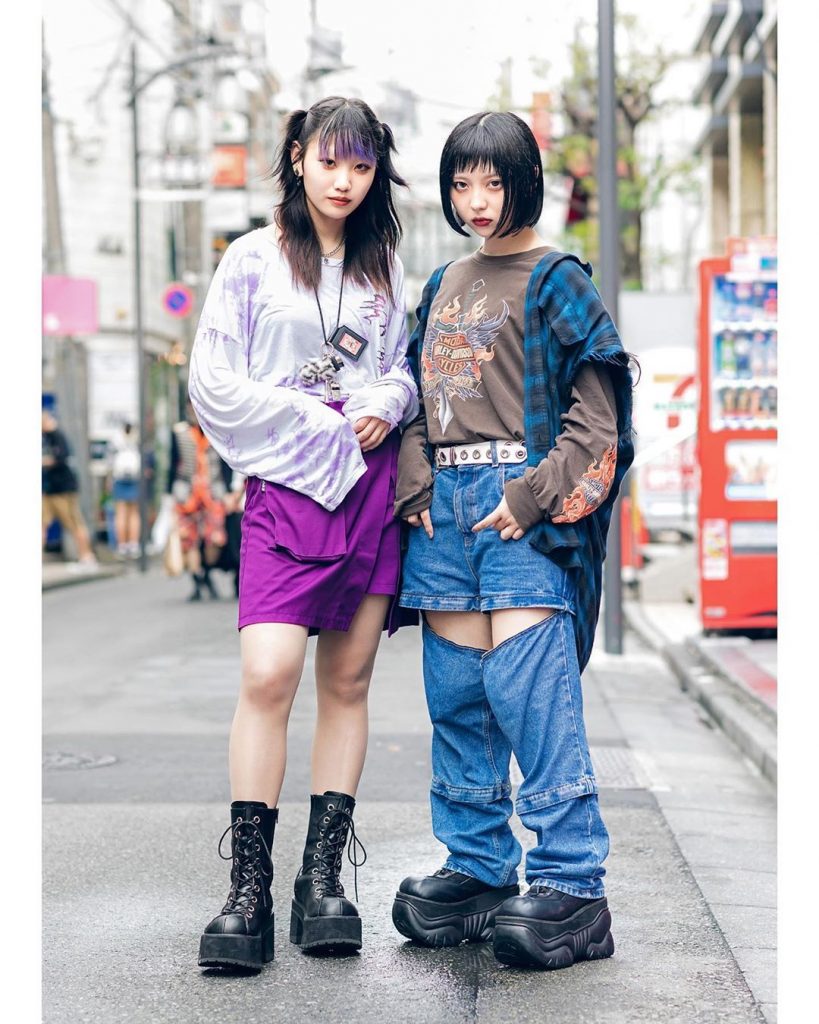
We hope you enjoyed this short article about the wonderfully expressive sub-culture of Japan that is Kawaii Fashion. It’s always great to know how and why an expressive movement came about, especially one as disruptive as the kawaii fashion movement has been over the years.
Even if you have just an inkling of interest in the style, we implore you to make a few purchases to celebrate the fashion style because of its uniqueness but mostly because sometimes you just need a change from the everyday and an injection of kawaii fashion straight from Harajuku might be just what you need.

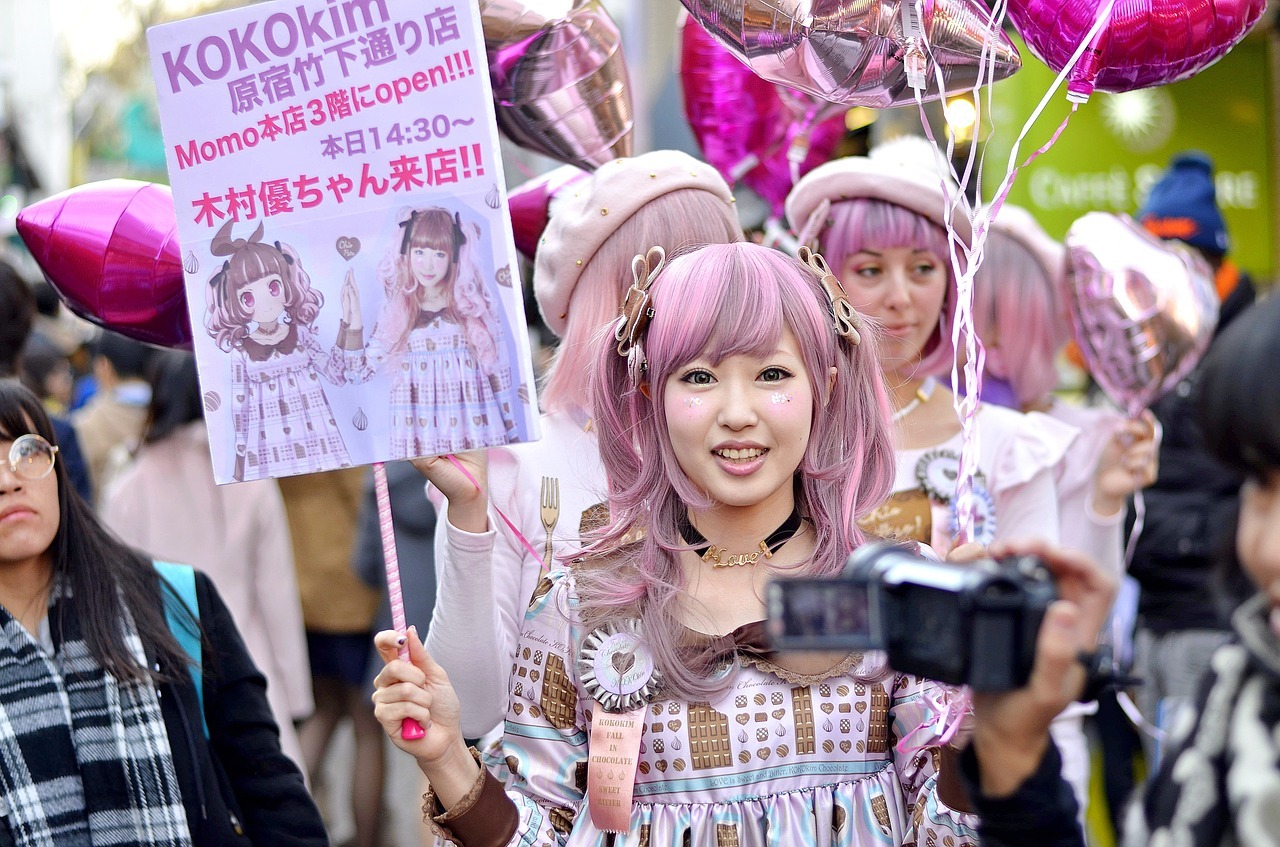

I love Kawaii fashion! I think it’s really creative and cute! It’s very different and creative compared to the fashion of other countries. Japan is one of a kind! Definetely!
I went to Japan Expo in Paris in my country, and I dressed up as a kawaii highschool girl with Japanese highschool outfit (I’m 25 year old woman lol but since I look naturally younger, I can definetely adopt the highschool outfit style!)
Soon I will go to Tokyo (in March 2020) And I plan to go to Harajuku, and dress up as kawaii fashion there! with pink bows, butterflies on my hair! Harajuku is really great! You can dress the craziest you want there, nobody will judge! because everyone is as crazy! (fashionly speaking). Anyways, its really great! Creative and UNIQUE fashion style. Japan will never end to amaze me!